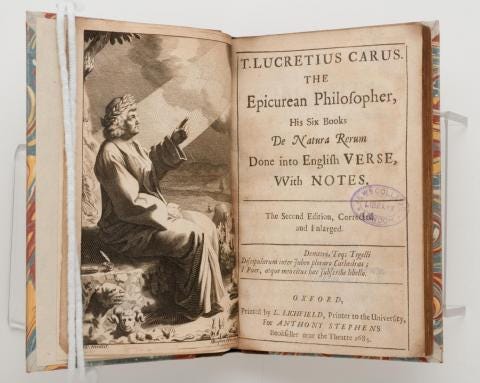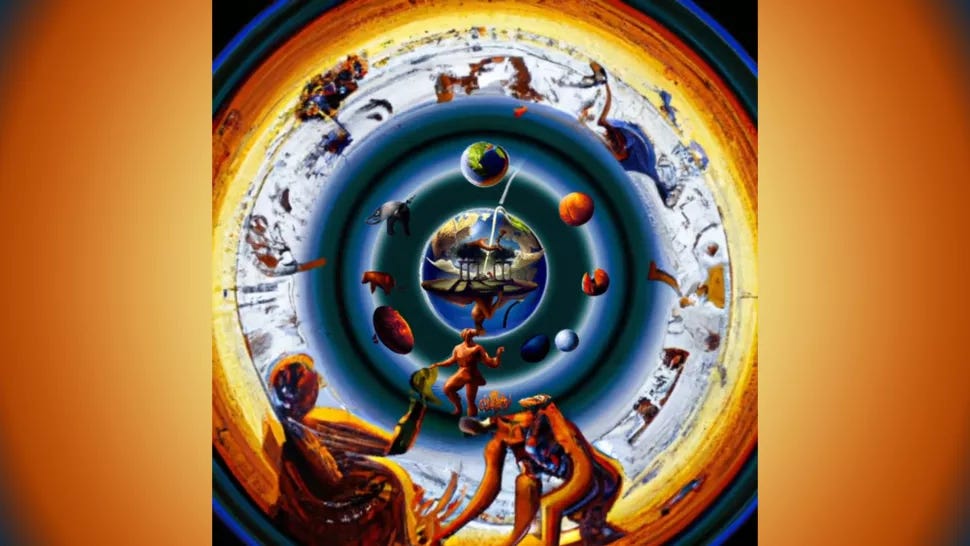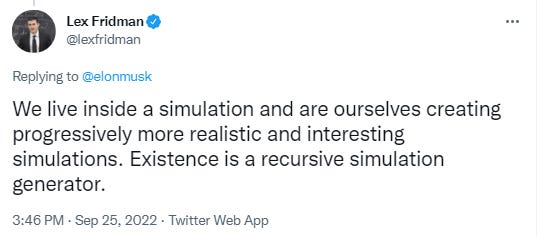“The smallest part of us is stardust.” —Alan Lightman
“A universe with conscious beings either finds itself in the dust, or it doesn’t.” —Permutation City
Around the 5th century BCE, a Greek philosopher named Democritus proposed that all matter was made of tiny and indivisible atoms. His writing did not survive, but his ideas would live on through Epicureanism popularized by a cornerstone philosophical text by a poet and studious disciple, Lucretius.
Lucretius’ De Rerum Natura, “On the Nature of Things”, served as an instructional poem written to introduce the Romans to Epicurean philosophy, an alternative mode of thought that would lay the intellectual foundations of modern science. By aiming to understand nature’s component parts and their interactions in the natural world—to “know the causes of things”—humanity redefined the notion of what it is to be human and extended our reach.
Renaissance perspective of humanity: Creation of Adam, Michelangelo. via The Vatican.
On the Atomization of Things
While Epicurus revolutionized the world as “atom and void”, we are at a time where the world is increasingly bit and byte. The bit is our new atom, the smallest unit of information storage. Our systems, institutions, careers, and social life have been transformed by these digital units, unbundling themselves from old gatekeepers but also weakening the bonds that once held them in place. It is this “atomic” effect that has been widely felt and discussed–a breakdown of stability, truth, meaning, and community.
Atomization → Weaker Bonds → New Permutations
But just like Epicurean philosophy dismantled superstitions and challenged power structures, it also laid the foundations to new modes of inquiry and paths to meaning. Revolutionary for its time, Epicurus transformed a purely mystical way of “knowing” into one that allowed better questions. By transforming fear that surrounded cosmic mysticism into potential to know “atom and void”, he empowered a greater collective intelligence that would propel humanity into “the beginning of infinity”.
Atomization weakens bonds, but allows for new permutations.
AI perspective of humanity: Creation of Adam, DALL-E. via Twitter.
In the world of technology, a now popular design methodology known as “atomic design”, powers the creator in thinking about design through a system of component parts. By better understanding the core unit, an HTML element like buttons and labels, new structures and systems emerge with different properties. Language sticks, however, and can be used to trace how old thinking permeates modern concepts–web “pages”, pagination, bookmarking, etc. are old remnants of the book era.
Like design systems, modern social systems make the fundamental mistake of assuming a legacy unit is a uniform, isolated, quantifiable thing. As our reality turns from “atom and void” to bit and byte, it will continue its path as more computational and simulated, and should now be understood as a fluid, interactive, interdependent medium. With new atomic forms, we also enable a new modularity–pieces deconstructed, broken apart can enable new permutations. These new permutations are everywhere in our world, taking new forms as atom + bit.
Lex always says it best.
AI-generated art, crowdsourced knowledge, online communities, creative niches, simulated worlds, APIs and plugins, low code tools, the rise of the solopreneur–the new atomization disrupts, but also recreates new frontiers of potential through atom + bit.
“One of the biggest advantages atomic design provides is the ability to quickly shift between abstract and concrete. We can simultaneously see our interfaces broken down to their atomic elements and also see how those elements combine together to form our final experiences.” —Atomic Design, Brad Frost
“The painter, when at a distance from the easel, can assess and analyze the whole of the work from this vantage. He scrutinizes and listens, chooses the next stroke to make, then approaches the canvas to do it. Then, he steps back again to see what he’s done in relation to the whole. It is a dance of switching contexts, a pitter-patter pacing across the studio floor that produces a tight feedback loop between mark-making and mark-assessing.” —The Shape of Design, Frank Chimero
Atomization as a social and technological force is mostly frowned on. But my goal is to focus on accelerating the upside that new permutations create—perhaps as a modern Lucretius reimagining modes of operating between the abstract and concrete, the atom + bit, old simulation and new, one in which our brains were designed for in the first place.





